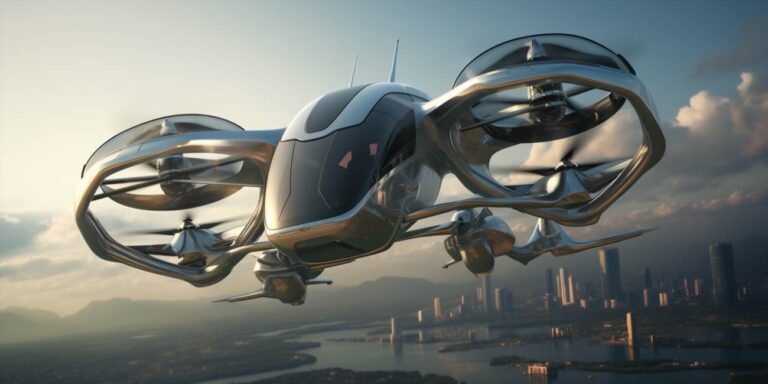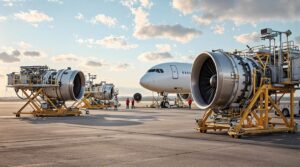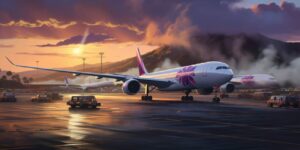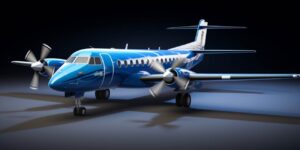Drones, also known as unmanned aerial vehicles (UAVs), have soared into prominence in recent years. These versatile aircraft operate without a human pilot on board and are controlled remotely or autonomously. Drones come in various sizes and serve a myriad of purposes, from recreational photography to military surveillance. Their agility and maneuverability make them ideal for tasks that may be too risky or impractical for traditional aircraft.
Next on our aerial journey are helicopters. Unlike fixed-wing aircraft, helicopters feature rotary wings, enabling them to take off and land vertically. This capability allows helicopters to access tight spaces, making them invaluable in search and rescue missions, medical evacuations, and urban transport. The ability to hover and maneuver with precision sets helicopters apart, offering a dynamic range of applications.
Enter the distinctive world of gyrocopters, blending elements of both airplanes and helicopters. Gyrocopters, or autogyros, utilize an unpowered rotor for lift and a conventional engine for thrust. This unique combination grants them the ability to take off and land in short distances while maintaining the efficiency of fixed-wing flight. Gyrocopters find use in surveillance, agriculture, and even recreational flying.
Now, let’s break down the key characteristics of these non-fixed-wing aircraft in a structured manner:
| Aircraft Type | Key Features |
|---|---|
| Drones | Unmanned, remote-controlled or autonomous, diverse applications, agility. |
| Helicopters | Vertical takeoff and landing, rotary wings, precision maneuvering, versatile applications. |
| Gyrocopters | Blend of airplane and helicopter features, unpowered rotor for lift, short takeoff and landing, efficient flight. |
Each of these non-fixed-wing aircraft brings a distinct set of capabilities to the skies, revolutionizing industries and pushing the boundaries of aerial innovation. As technology continues to advance, we can only imagine the future possibilities that await in this dynamic realm of flight.
Drones as non fixed wing aircraft suitable for many purposes
Drones, also known as Unmanned Aerial Vehicles (UAVs), have emerged as versatile non-fixed wing aircraft capable of serving a multitude of purposes. These drones have revolutionized various industries, offering innovative solutions to challenges previously constrained by traditional methods.
One of the defining features of drones is their ability to navigate through the air without a fixed wing structure. Unlike conventional fixed-wing aircraft, drones can hover, take off vertically, and navigate through tight spaces with agility. This unique characteristic makes them suitable for applications where precision and flexibility are paramount.
One key area where drones have made a significant impact is in agriculture. Farmers utilize drones equipped with high-resolution cameras and sensors to monitor crop health, detect diseases, and assess overall crop conditions. The ability to cover large agricultural areas efficiently has proven instrumental in optimizing crop yields and resource utilization.
In the field of search and rescue operations, drones play a crucial role. Their compact size and maneuverability allow them to access hard-to-reach areas, providing real-time imagery to aid rescue teams. In disaster-stricken zones, drones equipped with thermal cameras can identify heat signatures, helping locate survivors in the rubble.
The military has embraced drones for reconnaissance, surveillance, and even combat missions. The non-fixed wing design allows for silent and low-profile operations, making them valuable assets in strategic maneuvers. Drones have changed the landscape of modern warfare, offering a cost-effective and efficient alternative to traditional aircraft.
For environmental monitoring, drones provide a bird’s-eye view of ecosystems, helping scientists and researchers gather data on deforestation, wildlife migration, and climate change. The ability to access remote or hazardous locations makes drones an invaluable tool for studying and preserving the planet’s biodiversity.
Commercial applications of drones extend to filmmaking and photography. The non-fixed wing design allows filmmakers to capture dynamic shots from unique angles, enhancing the visual experience. Drones have become indispensable in the entertainment industry, enabling filmmakers to achieve cinematic excellence with aerial perspectives.
Delivery services have also tapped into the potential of drones. Companies are exploring the feasibility of using drones for delivering packages, especially in urban areas where traffic congestion poses challenges to traditional delivery methods. The non-fixed wing design enables drones to navigate through cityscapes with ease.
Helicopters and gyrocopters also non fixed wing aerial vehicles
When it comes to non-fixed wing aerial vehicles, helicopters and gyrocopters stand out as fascinating examples of engineering prowess. These airborne wonders defy gravity in distinctive ways, offering unique capabilities that cater to various needs.
Firstly, let’s delve into the realm of private helicopters, where exclusivity meets the sky. These sophisticated flying machines epitomize luxury and convenience, providing a means of swift and personalized travel for those who prefer the clouds as their highway. Whether it’s transporting high-profile individuals or reaching remote destinations with ease, private helicopters redefine the concept of flying in style.
On the flip side, rescue helicopters play a pivotal role in emergency scenarios, symbolizing hope and salvation. These airborne heroes soar into action during natural disasters, medical emergencies, or search-and-rescue operations. Their agility, speed, and advanced equipment make them indispensable in critical situations where every moment counts. The whirr of rotor blades becomes a reassuring sound for those in distress.
For a different kind of airborne experience, consider the whimsical allure of sightseeing gyrocopters. Offering a unique blend of thrill and panoramic views, these open-cockpit wonders redefine sightseeing from the sky. With the wind in your hair and unobstructed vistas below, gyrocopters provide an intimate and exhilarating way to explore landscapes. Unlike traditional helicopters, gyrocopters embrace a more open design, enhancing the connection between passengers and the surrounding beauty.
Imagine soaring above breathtaking landscapes in a gyrocopter, gazing down at nature’s wonders or iconic landmarks. It’s a visceral experience that transcends conventional sightseeing, allowing enthusiasts to embrace the freedom of the open sky. The distinct advantage of gyrocopters lies in their ability to navigate at lower altitudes, providing an immersive journey through landscapes that might go unnoticed from higher-flying counterparts.
As we navigate the diverse world of non-fixed wing aerial vehicles, it’s evident that each type serves a unique purpose, from the opulence of private helicopters to the life-saving capabilities of rescue helicopters and the adventurous spirit embodied by sightseeing gyrocopters. Whether it’s for leisure, necessity, or exploration, these airborne marvels contribute to the ever-evolving tapestry of human achievement in the skies.
Features and capabilities of non fixed wing aircraft
Non-fixed wing aircraft have revolutionized aviation with their unique VTOL (Vertical Takeoff and Landing) capabilities, offering a flexibility that traditional aircraft lack. One of the standout features is their ability to seamlessly hover in mid-air, a feat that fixed-wing counterparts can only dream of.
One remarkable aspect of these aircraft is their capacity to effortlessly carry loads. Unlike conventional planes limited by runway lengths, VTOL marvels can lift off and land vertically, making them ideal for urban environments where space is a premium. Whether it’s transporting critical medical supplies or heavy machinery to remote locations, these aircraft redefine the possibilities of cargo transportation.
What sets these aerial wonders apart is their adaptability for remote operation. Pilots can control them from a safe distance, opening doors to applications in hazardous environments or situations where human intervention might pose risks. This characteristic not only enhances safety but also broadens the scope of tasks these aircraft can undertake.
Imagine a scenario where a VTOL craft, equipped with advanced sensors and cameras, is deployed for search and rescue missions. Its hover capability allows it to linger over an area, providing real-time data to operators managing the mission from a remote location. The ability to carry loads becomes a lifeline, delivering aid swiftly to areas inaccessible by conventional means.
Moreover, the remote operation feature is a game-changer in surveillance and reconnaissance. Unmanned VTOL aircraft can navigate through challenging terrains, providing valuable intelligence without putting human lives at risk. The hover capability becomes invaluable in scenarios where a fixed position is crucial for data collection or observation.
To illustrate, picture a forest fire response where a VTOL drone hovers above the flames, relaying vital information to firefighting teams on the ground. Its ability to carry loads may involve deploying firefighting materials precisely where needed, optimizing the overall effectiveness of the operation.
The integration of these features not only expands the range of applications but also propels the field of aviation into new frontiers. VTOL aircraft, with their ability to hover, carry loads, and facilitate remote operation, mark a paradigm shift, offering innovative solutions to challenges that were once deemed insurmountable.






